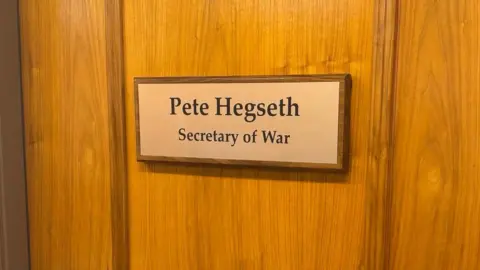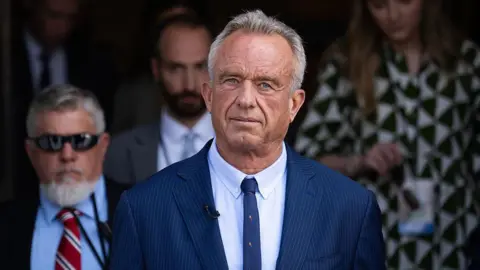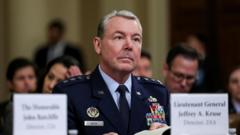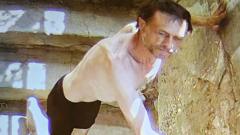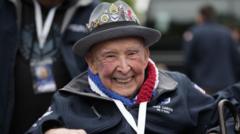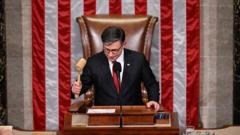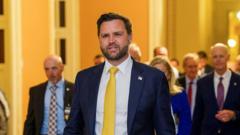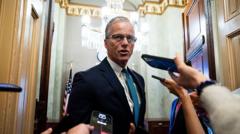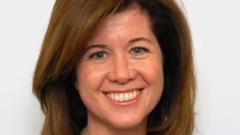Women who served in the US military are pushing back against Defence Secretary Pete Hegseth's announcement that the requirements for combat roles will 'return to the highest male standard', saying the standards have always been the same for men and women. 'None of us have ever asked for special treatment,' Elisa Cardnell, who served in the US Navy for eleven years, told the BBC. Speaking to hundreds of generals, Hegseth reiterated his beliefs that the military had lowered standards to accommodate women and put service members at risk. His new directives would bring them back to a higher level, he said. 'If it means no women qualify for combat jobs, then so be it,' he stated. He maintained that women would not be excluded outright from the armed forces. In January, the former Fox News commentator faced challenges in the Senate regarding his views on women in the military, which were contentious.
In the wake of Hegseth's comments, female veterans expressed outrage. Former US Marine fighter pilot Amy McGarth criticized Hegseth's assertions as misleading. 'There has always been one standard for those jobs,' she said, indicating that the criteria for success in combat roles have never been contingent upon gender. Ms Cardnell reinforced this, explaining that assessments for combat roles do not factor in age or gender, and that all personnel must meet the same standards.
While annual physical tests differ by age and gender, Cardnell specified that combat roles require a consistent and non-discriminatory standard. The clarity on Hegseth's actual initiatives remains ambiguous as the Pentagon provides no substantial updates on future military assessments.
Hegseth announced his intention to restore standards altered since 2015, referencing the directive by former Defence Secretary Ash Carter that sought to standardize military roles for women. He emphasized that physical standards must be high and uniform for all combat situations. Conversely, Senator Tammy Duckworth, also a veteran, remarked that Hegseth's comments could deter recruitment, highlighting the importance of capable women in combat.
During this discourse, some female military personnel have supported Hegseth, advocating for a return to rigid standards to fortify national security, asserting that diversity quotas distract from military efficacy. The complexities of gender integration in the military continue to provoke discussion and debate about future policies.
}In the wake of Hegseth's comments, female veterans expressed outrage. Former US Marine fighter pilot Amy McGarth criticized Hegseth's assertions as misleading. 'There has always been one standard for those jobs,' she said, indicating that the criteria for success in combat roles have never been contingent upon gender. Ms Cardnell reinforced this, explaining that assessments for combat roles do not factor in age or gender, and that all personnel must meet the same standards.
While annual physical tests differ by age and gender, Cardnell specified that combat roles require a consistent and non-discriminatory standard. The clarity on Hegseth's actual initiatives remains ambiguous as the Pentagon provides no substantial updates on future military assessments.
Hegseth announced his intention to restore standards altered since 2015, referencing the directive by former Defence Secretary Ash Carter that sought to standardize military roles for women. He emphasized that physical standards must be high and uniform for all combat situations. Conversely, Senator Tammy Duckworth, also a veteran, remarked that Hegseth's comments could deter recruitment, highlighting the importance of capable women in combat.
During this discourse, some female military personnel have supported Hegseth, advocating for a return to rigid standards to fortify national security, asserting that diversity quotas distract from military efficacy. The complexities of gender integration in the military continue to provoke discussion and debate about future policies.







